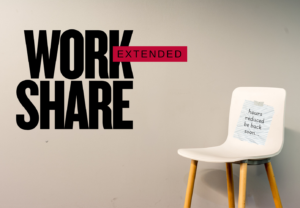Exit Interview: Creating a Positive Experience and a Sample Questionnaire
The cost of replacing employees is expensive. Beyond placing a job ad, it includes time for selecting a new employee, training a new employee and lost productivity while the position is open and until the new employee gets up to speed. An exit interview can uncover what an organization needs to do to reduce turnover rates and reduce the associated costs, and when conducted properly, it can provide insight into possible issues surrounding discrimination, training and development, lack of opportunities and concerns related to benefits and compensation. Of course, it can also tell you what you are doing well and need to keep doing.
The first step is to let the employee know that their participation is voluntary. The second step is to create a positive experience for the ex-employee; by inviting them to be open and honest it will provide an opportunity to flag any problems, tell you about concerns with work, and once they’ve left, to ensure they do not say negative things about the company. The third and final step is to remember, that the information compiled from the exit interview is only valuable if shared, therefore it must be circulated to the appropriate people within the organization and then used to make positive changes.
When conducting an exit interview, keep in mind to:
[listdot]
- hold it in a private setting and face to face
- treat the employee with dignity and respect
- begin the process on a positive note, for example offer a thank you for the employee’s service to the organization
- be prepared by planning out issues to be covered and questions to be asked
- take notes and provide documentation of the exit interview
- focus on workplace issues exclusively to help the company improve
- ensure it is not a discussion of the employee’s performance
- keep calm and don’t use it as an opportunity to defend the organization
- ensure the information provided by the employee does not affect their reference
[/listdot] Some employers offer the employee a questionnaire to complete as an alternative to a face to face interview. I support this as it gives the employee time to think about their responses, but I also believe that you cannot forego the face to face interview, therefore I like to incorporate both into the process. From personal experience I like to email the exit interview with a brief message (see below), then schedule the face to face interview. I find this way both parties are better prepared when the meeting takes place, as well it calms the exiting employee by eliminating the mystery surrounding their last meeting.
Sample Request to Participate in Exit Interview
Part of NAMEOFCOMPANY’s process for all exiting employees is to conduct an exit interview with all departing employees. It is voluntary however, if you choose to participate please complete the attached exit interview form and email back to my attention. To complete the process, I would also like to schedule a brief meeting with you to discuss your responses to the questionnaire. Please let me know if you will participate and if so perhaps we can set up a time to speak on NAMEOFTHEDAY day.
There is a lot of discussion about how valuable exit interviews are, even amongst HR professionals the debate continues. From my perspective, they are tedious and yes, another item to add to the long list of things to do, but occasionally you get tidbits of information that can help an organization.
[superbuttoninline href=”http://info.pivotalsolutions.com/exit-interview-questionnaire-free-download”] Free Download: Sample Exit Interview Questionnaire[/superbuttoninline]
The free questionnaire is a great starting point. Every organization will want to measure and track different things. Feel free to add your own questions.


 Our HR solutions experts can recommend the right mix of HR outsourced services to make your entry into Canada easier.
Our HR solutions experts can recommend the right mix of HR outsourced services to make your entry into Canada easier.  Pivotal Employment Management Services co-hires your workforce, simplifying entry of your business in Canada.
Pivotal Employment Management Services co-hires your workforce, simplifying entry of your business in Canada. 
















Catching the M&A Wave